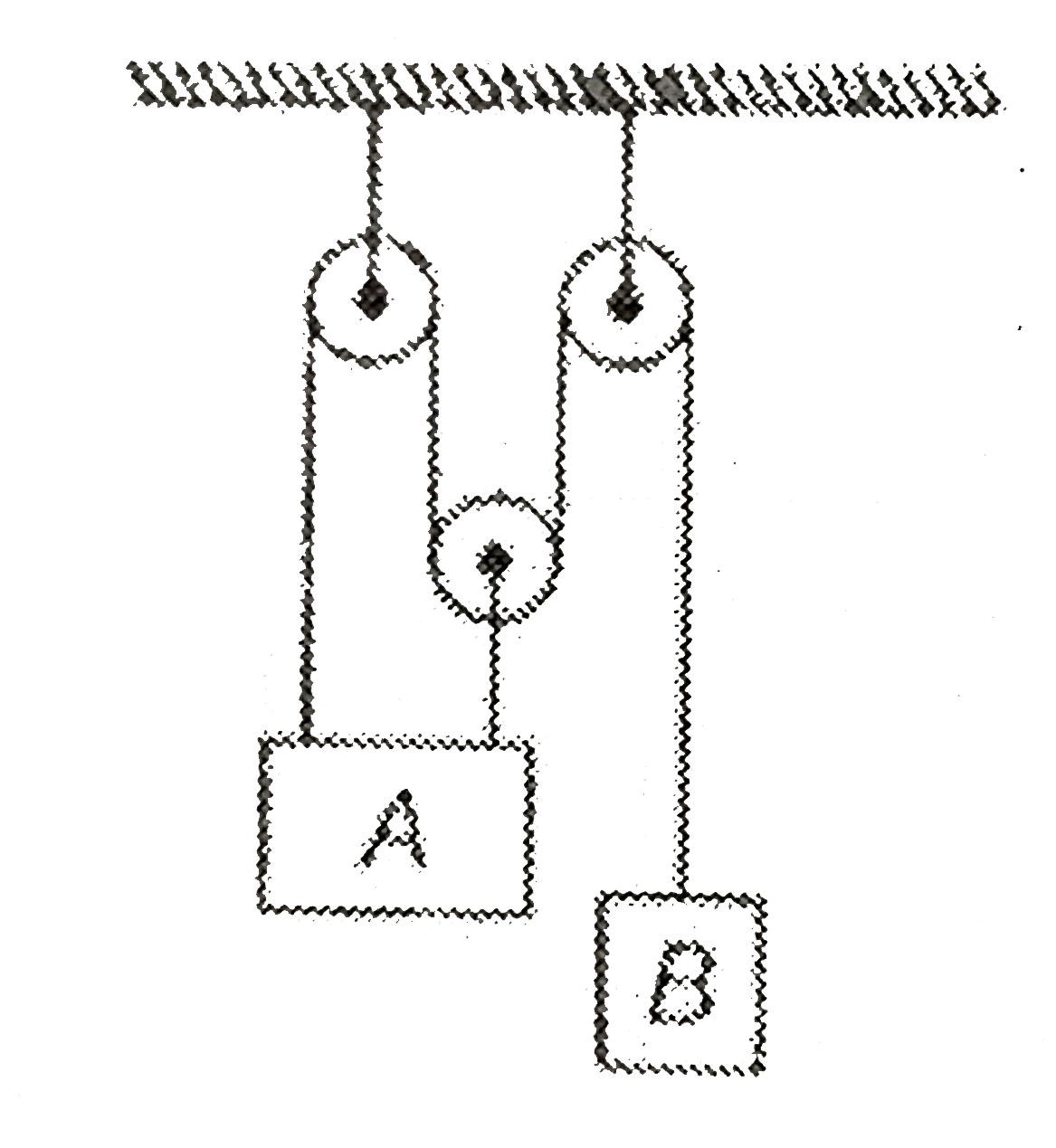An open lift is moving upward with velocity 10m/s. It has an upward acceleration of 2m/s2. A ball is projected upwards with velocity 20m/s relative to ground. Find
(a) time when ball again meets the lift
(b) displacement of lift and ball at that instant.
(c) distance travelled by the ball upto that instant.
Take g=10m/s2
The correct Answer is:A
To solve the problem step by step, we will break it down into parts (a), (b), and (c) as requested.
Given Data:
- Velocity of the lift, vL=10m/s (upward)
- Acceleration of the lift, aL=2m/s2 (upward)
- Initial velocity of the ball, uB=20m/s (upward)
- Acceleration due to gravity, g=10m/s2 (downward)
(a) Time when the ball again meets the lift
1. Displacement of the Lift:
The displacement SL of the lift after time t can be calculated using the equation of motion:
SL=vLt+12aLt2
Substituting the values:
SL=10t+12⋅2⋅t2=10t+t2
2. Displacement of the Ball:
The displacement SB of the ball after time t is given by:
SB=uBt−12gt2
Substituting the values:
SB=20t−12⋅10⋅t2=20t−5t2
3. Setting the Displacements Equal:
Since we want to find the time when the ball meets the lift again, we set SL=SB:
10t+t2=20t−5t2
Rearranging gives:
6t2−10t=0
Factoring out t:
t(6t−10)=0
Thus, t=0 (initial position) or 6t−10=0 leading to:
t=106=53seconds
(b) Displacement of the lift and ball at that instant
1. Using the time t=53 seconds:
Substitute t into the displacement equation for the lift:
SL=10(53)+(53)2
Calculating:
SL=503+259=1509+259=1759meters
(c) Distance travelled by the ball up to that instant
1. Finding the time when the ball's velocity becomes zero:
The time t0 when the ball's velocity becomes zero can be found using:
v=uB−gt⟹0=20−10t⟹t=2seconds
2. Since 53<2:
The ball is still moving upwards at t=53 seconds, so the distance travelled is equal to the displacement:
SB=20(53)−5(53)2
Calculating:
SB=1003−5⋅259=1003−1259=3009−1259=1759meters
Summary of Results:
- (a) Time when the ball meets the lift again: t=53seconds
- (b) Displacement of the lift and ball at that instant: SL=SB=1759meters≈19.4meters
- (c) Distance travelled by the ball up to that instant: SB=1759meters≈19.4meters
- Velocity of the lift, vL=10m/s (upward)
- Acceleration of the lift, aL=2m/s2 (upward)
- Initial velocity of the ball, uB=20m/s (upward)
- Acceleration due to gravity, g=10m/s2 (downward)
The displacement SL of the lift after time t can be calculated using the equation of motion:
SL=vLt+12aLt2
Substituting the values:
SL=10t+12⋅2⋅t2=10t+t2
The displacement SB of the ball after time t is given by:
SB=uBt−12gt2
Substituting the values:
SB=20t−12⋅10⋅t2=20t−5t2
Since we want to find the time when the ball meets the lift again, we set SL=SB:
10t+t2=20t−5t2
Rearranging gives:
6t2−10t=0
Factoring out t:
t(6t−10)=0
Thus, t=0 (initial position) or 6t−10=0 leading to:
t=106=53seconds
Substitute t into the displacement equation for the lift:
SL=10(53)+(53)2
Calculating:
SL=503+259=1509+259=1759meters
The time t0 when the ball's velocity becomes zero can be found using:
v=uB−gt⟹0=20−10t⟹t=2seconds
The ball is still moving upwards at t=53 seconds, so the distance travelled is equal to the displacement:
SB=20(53)−5(53)2
Calculating:
SB=1003−5⋅259=1003−1259=3009−1259=1759meters
- (a) Time when the ball meets the lift again: t=53seconds
- (b) Displacement of the lift and ball at that instant: SL=SB=1759meters≈19.4meters
- (c) Distance travelled by the ball up to that instant: SB=1759meters≈19.4meters
Topper's Solved these Questions
- KINEMATICSBOOK - DC PANDEY ENGLISHCHAPTER - KINEMATICSEXERCISE - Exercise 6.1
2 Videos
- KINEMATICSBOOK - DC PANDEY ENGLISHCHAPTER - KINEMATICSEXERCISE - Exercise 6.2
3 Videos
- KINEMATICSBOOK - DC PANDEY ENGLISHCHAPTER - KINEMATICSEXERCISE - Example Type 7
1 Videos
- GRAVITATIONBOOK - DC PANDEY ENGLISHCHAPTER - GRAVITATIONEXERCISE - (C) Chapter Exercises
45 Videos
- KINEMATICS 1BOOK - DC PANDEY ENGLISHCHAPTER - KINEMATICS 1EXERCISE - INTEGER_TYPE
15 Videos
Similar Questions
An open lift is moving upward with velocity 10m/s. It has an upward acceleration of 2m/s2. A ball is projected upwards with velocity 20m/s relative to ground. Find
(a) time when ball again meets the lift
(b) displacement of lift and ball at that instant.
Take g=10m/s2
View SolutionA ball of mass 100 gm is projected upwards with velocity (10m/s). It returns back with (6m/s). Find work done by air resistance .
View SolutionA ball is thrown vertically upward with a velocity of 20 m/s. Calculate the maximum height attain by the ball.
View SolutionA ball is projected vertically up with speed 20 m/s. Take g=10m/s2
View SolutionA ball is thrown upwards, it takes 4 s to reach back to the ground. Find its initial velocity
View SolutionA ball is projected vertically up wards with a velocity of 100 m/s. Find the speed of the ball at half the maximum height. (g=10m/s2)
View SolutionFrom a lift moving upwards with a uniform acceleration a = 2ms–2, a man throws a ball vertically upwards. with a velocity v = 12ms−1 releative to lift the ball comes back to the man after a time t find. t
View SolutionA particle is projected vertically upwards from ground with velocity 10 m/s. Find the time taken by it to reach at the highest point ?
View SolutionA ball thrown vertically upwards with an initial velocity of 1.4m/s. The total displcement of the ball is
View SolutionAt a given instant. A is moving with velocity of 5m/s upward. What is velocity of B at that time:

View Solution
